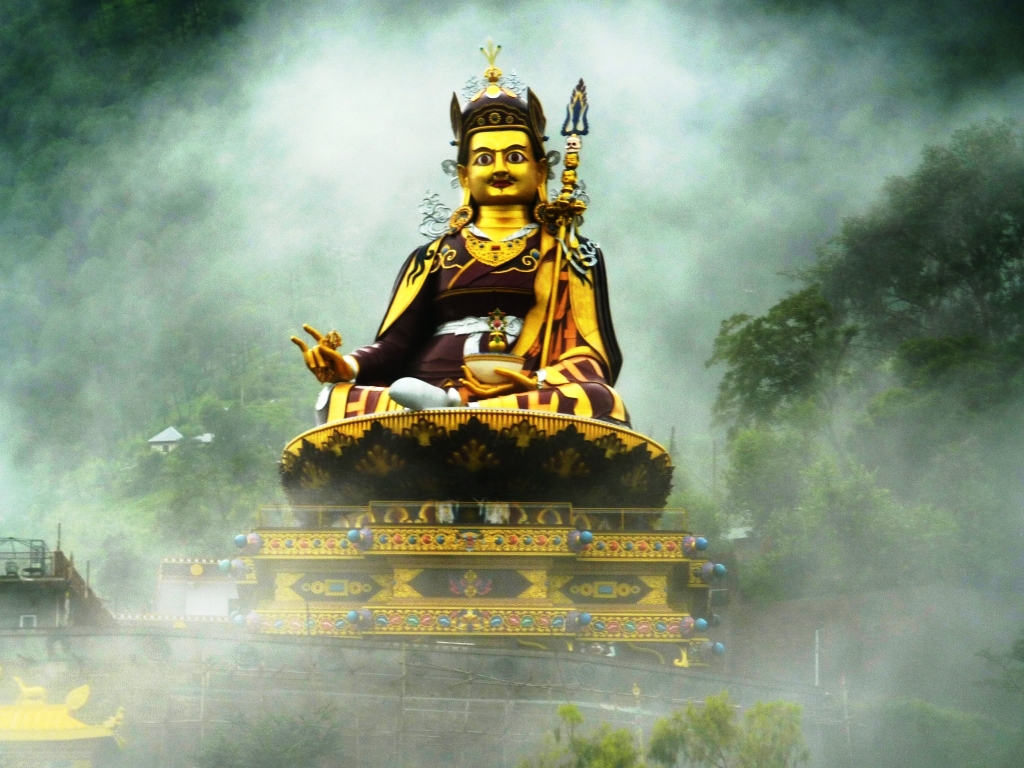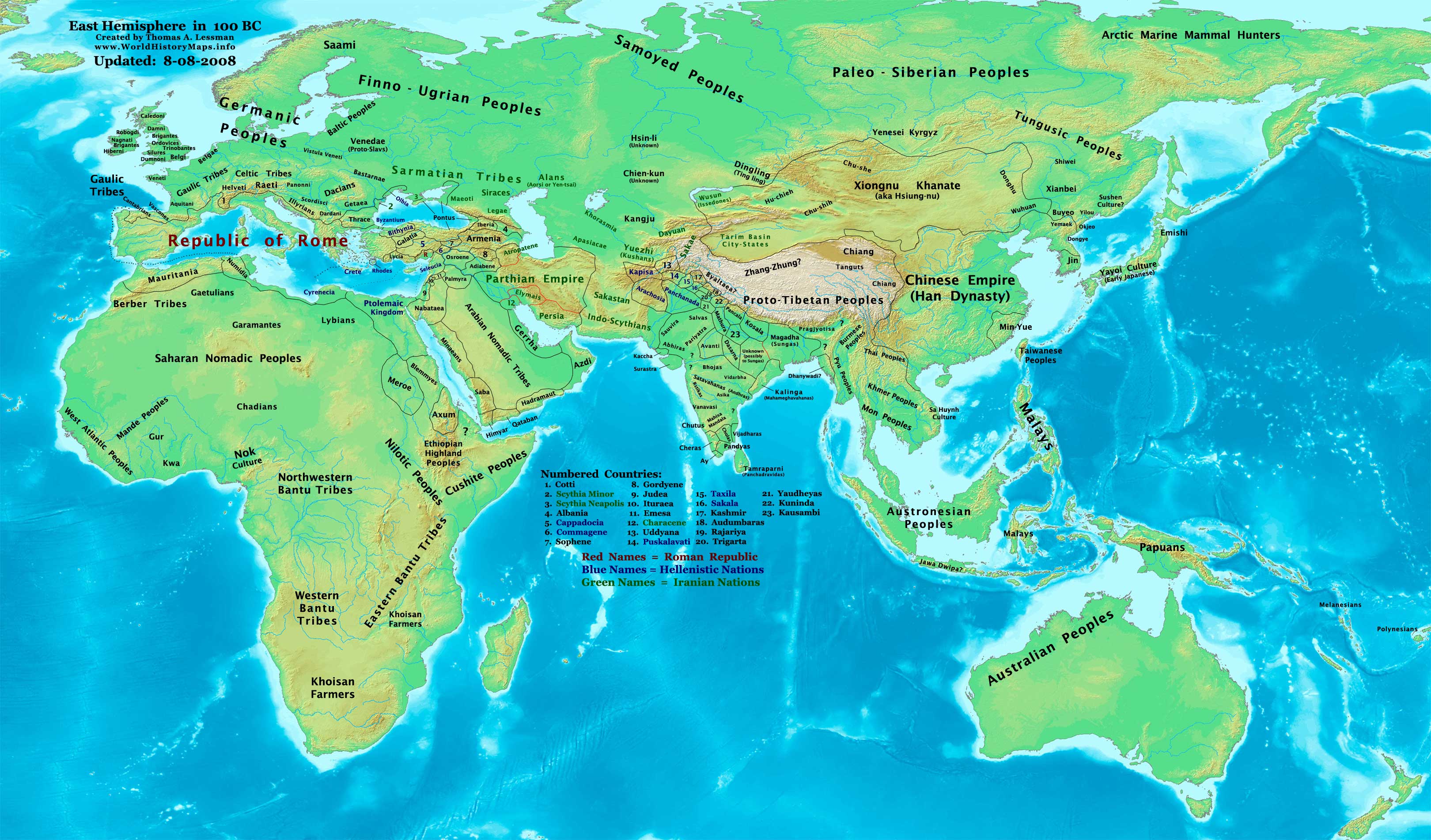|
Padmasambhāva
Padmasambhava ('Born from a Lotus'), also known as Guru Rinpoche ('Precious Guru'), was a legendary tantric Buddhist Vajracharya, Vajra master from Oddiyana. who fully revealed the Vajrayana in Tibet, circa 8th – 9th centuries... He is considered an emanation or Nirmāṇakāya of Gautama Buddha, Shakyamuni Buddha as foretold by the Buddha himself. According to early Tibetan sources including the ''Testament of Ba'', he came to Tibet in the 8th century and designed Samye Monastery, the first Buddhist monastery in Tibet during the reign of King Trisong Detsen. He, the king, and Khenpo Shantarakshita are also responsible for creating the Tibetan canon, Tibetan Canon through translating all of the Buddha's teachings and their commentaries into the Tibetan language. According to Lewis Doney, while his historical authenticity was questioned by earlier Tibetology, Tibetologists, it is now "cautiously accepted.” Padmasambhava himself was recorded as saying he was an historical per ... [...More Info...] [...Related Items...] OR: [Wikipedia] [Google] [Baidu] |
Oddiyana
(also: ''Uḍḍiyāna'', ''Uḍḍāyāna'', ''Udyāna'' or 'Oḍḍiyāna'), a small region in early medieval India, is ascribed importance in the development and dissemination of Vajrayāna Buddhism.‘Uḍḍiyāna and Kashmir’, pp 265-269 ‘The Śaiva Exegesis of Kashmir’, in Mélanges tantriques à la mémoire d’Hélène Brunner. Tantric Studies in Memory of Hélène Brunner, Collection Indologie 106, EFEO, Institut français de Pondichéry (IFP), ed. Dominic Goodall and André Padoux, 2007.) Tibetan Buddhist traditions view it as a Beyul (Tibetan: སྦས་ཡུལ, Wylie: sbas-yul), a legendary heavenly place inaccessible to ordinary mortals. Padmasambhava, the eighth-century Buddhist master who was instrumental in the introduction of Buddhism to Tibet, was believed to have been born in Oddiyana. The Dzogchen Siddha Garab Dorje is likewise attributed to this region. It is ascribed importance in the development and dissemination of Vajrayāna Buddhism. The ... [...More Info...] [...Related Items...] OR: [Wikipedia] [Google] [Baidu] |
Vajrayana
''Vajrayāna'' (; 'vajra vehicle'), also known as Mantrayāna ('mantra vehicle'), Guhyamantrayāna ('secret mantra vehicle'), Tantrayāna ('tantra vehicle'), Tantric Buddhism, and Esoteric Buddhism, is a Mahāyāna Buddhism, Mahāyāna Buddhist tradition that emphasizes Eastern esotericism, esoteric practices and rituals aimed at Sudden awakening, rapid spiritual awakening. Emerging between the 5th and 7th centuries CE in medieval India, Vajrayāna incorporates a Tibetan tantric practice, range of techniques, including the use of mantras (sacred sounds), dhāraṇīs (mnemonic codes), mudrās (symbolic hand gestures), mandalas (spiritual diagrams), and the visualization of Buddhist deities, deities and Buddhahood, Buddhas. These practices are designed to transform ordinary experiences into paths toward Enlightenment in Buddhism, enlightenment, often by engaging with aspects of Taṇhā, desire and Dvesha, aversion in a ritualized context. A distinctive feature of Vajrayāna is ... [...More Info...] [...Related Items...] OR: [Wikipedia] [Google] [Baidu] |
Nyangrel Nyima Özer
Nyangrel Nyima Özer (, 1124–1192) was an important Nyingma tertön, a revealer of terma treasure texts in Tibetan Buddhism. Overview Nyima Özer was considered to be a reincarnation of King Trisong Detsen. He was a lay yogi and had two sons: Nam mkha’ ‘od zer and Nam’mkha’ dpal ba (who was also his main disciple and heir).Biography Of Nyang ral nyi ma 'od zer ''from the Tibetan Renaissance Seminar,'' UVACollab, The University of Virginia. Nyang Ral Nyima Özer had several teachers, in particular, he studied with his father - the great master Nyangtona. His teachers were Gyanonpa Tondo, Zhikpo Nyima Senge, Mel and Kavachepa Tonpa Khache. Guru Chowang (G ... [...More Info...] [...Related Items...] OR: [Wikipedia] [Google] [Baidu] |
Tibetan Buddhism
Tibetan Buddhism is a form of Buddhism practiced in Tibet, Bhutan and Mongolia. It also has a sizable number of adherents in the areas surrounding the Himalayas, including the Indian regions of Ladakh, Gorkhaland Territorial Administration, Darjeeling, Sikkim, and Arunachal Pradesh, as well as in Nepal. Smaller groups of practitioners can be found in Central Asia, some regions of China such as Northeast China, Xinjiang, Inner Mongolia and some regions of Russia, such as Tuva, Buryatia, and Kalmykia. Tibetan Buddhism evolved as a form of Mahayana, Mahāyāna Buddhism stemming from the latest stages of Indian Buddhism (which included many Vajrayana, Vajrayāna elements). It thus preserves many Indian Buddhist Tantra, tantric practices of the Gupta Empire, post-Gupta Medieval India, early medieval period (500–1200 CE), along with numerous native Tibetan developments. In the pre-modern era, Tibetan Buddhism spread outside of Tibet primarily due to the influence of the Mongol Emp ... [...More Info...] [...Related Items...] OR: [Wikipedia] [Google] [Baidu] |
Yeshe Tsogyal
Yeshe Tsogyal (c. 757 or 777 – 817 CE), also known as "Victorious Ocean of Knowledge", "Knowledge Lake Empress" (, ཡེ་ཤེས་མཚོ་རྒྱལ), or by her Sanskrit name ''Jñānasāgarā'' "Knowledge Ocean", or by her clan name "Lady Kharchen", attained enlightenment in her lifetime and is considered the Mother of Tibetan Buddhism. Yeshe Tsogyal is the highest woman in the Nyingma Vajrayana lineage. Some sources say she, as Princess of Karchen, was either a wife or consort of Tri Songdetsen, emperor of Tibet, when she began studying Buddhism with Padmasambhava, who became her main karmamudrā consort. Padmasambhava is a founder-figure of the Nyingma tradition of Tibetan Buddhism, and is considered as a second buddha of our era. She is known to have revealed terma with Padmasambhava and was also the main scribe for these terma. Later, Yeshe Tsogyal also hid many of Padmasambhava's terma on her own, under the instructions of Padmasambhava for future generation ... [...More Info...] [...Related Items...] OR: [Wikipedia] [Google] [Baidu] |
Mandāravā
Mandāravā (, Sanskrit, Skt., ''mandāravā'' 'Erythrina stricta, Indian coral tree', ) (also known as Pāṇḍaravāsinī) was, along with Yeshe Tsogyal, one of the two principal wikt:consort, consorts of great 8th-century Indian Vajrayana teacher Padmasambhava (Guru Rinpoche), a founder-figure of Tibetan Buddhism. Mandarava is considered to be a female guru-deity in Tantric Buddhism or Vajrayana. According to her biographer Samten Lingpa, she was born a princess in Zahor in northern India. She renounced her royal birthright at an early age in order to practice the Dharma. Mandarava is known as being highly educated at a very young age, a rare accomplishment for a woman at that time. She was the primary student of Yeshe Tsogyal. Mandarava's devotion led her to bring at least 800 women, including her entire personal retinue, to the path of the Dharma, all before meeting her teacher, Padmasambhava. Mandarava is said to have attained full enlightenment in the company of Padmasam ... [...More Info...] [...Related Items...] OR: [Wikipedia] [Google] [Baidu] |
Vajracharya
A vajrācārya (vajra + acharya, Tibetan: རྡོ་རྗེ་སློབ་དཔོན་, ''dorje lopön'', Wyl. ''rdo rje slob dpon,'' Chinese: 金剛阿闍梨, pinyin: ''jīngāng āshélì''; rōmanji: ''kongō ajari'') (alternatively, Chinese: 金剛上師, pinyin'': jīngāng shàngshī'') is a Vajrayana Buddhist master, guru or priest. It is a general term for a tantric master in Vajrayana and Mahayana Buddhist traditions, including Tibetan Buddhism, Chinese Esoteric Buddhism, Chan Buddhism, Shingon, Bhutanese Buddhism, Newar Buddhism. Tibetan Buddhism Dorje Lopön is a title given to high-level religious leaders who preside over Tibetan tantric practice. ''Dorje'' is the Tibetan equivalent of the Sanskrit ''vajra'' and therefore the term appears frequently in Tibetan terminology relating to Vajrayana Buddhism. A Dorje Lopön is usually well educated and trained in tantric practice, and is therefore a well respected figure. They might be the heads of mon ... [...More Info...] [...Related Items...] OR: [Wikipedia] [Google] [Baidu] |
Garab Dorje
Garab Dorje (c. 665) () was the first human to receive the complete direct transmission teachings of Sutra, Tantra and Dzogchen. The circumstances of his birth are shrouded in different interpretations, with some accounts describing a miraculous birth by a virgin daughter of the king of Uddiyana. Garab Dorje became the first teacher of Dzogchen ("Great Perfection", also called ''Ati Yoga'') teachings. Garab Dorje's core teachings revolve around understanding the nature of the mind as the original Buddha, beyond birth and cessation, emphasizing meditation as a practice of allowing this natural state without seeking, this is the highest teaching in Buddhism. According to the Nyingma school tradition of Tibetan Buddhism Tibetan Buddhism is a form of Buddhism practiced in Tibet, Bhutan and Mongolia. It also has a sizable number of adherents in the areas surrounding the Himalayas, including the Indian regions of Ladakh, Gorkhaland Territorial Administration, D ..., he transmit ... [...More Info...] [...Related Items...] OR: [Wikipedia] [Google] [Baidu] |
Terma (religion)
Terma (; "hidden treasure") are various forms of hidden teachings that are key to the Vajrayana of Tibetan Buddhism, and Bon spiritual traditions. In the Vajrayana Nyingma school tradition, two lineages occur: an oral ''Kama lineage'' and a revealed ''Terma lineage''. ''Terma'' teachings were originally concealed by eighth-century Vajrayana masters Padmasambhava and Yeshe Tsogyal, to be discovered by treasure revealers known as tertöns, when the time was ripe. As such, the termas represent a tradition of continuous revelation in the Vajrayana of Tibetan Buddhism. Background The terma tradition of rediscovering hidden teaching is not unique to Tibet. It has antecedents in India and cultural resonances in Hindu Vaishnavism as well. The Vaishnava saint Chaitanya Mahaprabhu is said to have rediscovered a fragment of the ''Brahma Samhita'' in a trance state of devotional ecstasy. There is another occasion involving Chaitanya, who deposited his divine love (''prema'') for ... [...More Info...] [...Related Items...] OR: [Wikipedia] [Google] [Baidu] |
Tertön
In Tibetan Buddhism, a Tertön () is a person who is a discoverer of ancient hidden texts or '' terma''. Many tertöns are considered to be incarnations of the twenty five main disciples of Padmasambhava ( Guru Rinpoche), who foresaw a dark time in Tibet. He and his consort Yeshe Tsogyal hid teachings to be found in the future to benefit beings.Gobel, Detlev and Knoll, Claudia, "The Tantric Consorts and Children of the 15th Karmapa, Buddhism Today, Spring/Summer 2020 issue 45 p 41 A vast system of transmission lineages developed. Scriptures from the Nyingma school were updated by terma discoveries, and terma teachings have guided many Tibetan Bon and Buddhist practitioners. The termas are sometimes objects like statues, and can also exist as dharma texts and experiences. Tertöns discover the texts at the right time and place. The teachings can be relatively simple transmissions as well as entire meditation systems. Termas are found in rocks, water and the minds of incarnations o ... [...More Info...] [...Related Items...] OR: [Wikipedia] [Google] [Baidu] |
Buddhahood
In Buddhism, Buddha (, which in classic Indo-Aryan languages, Indic languages means "awakened one") is a title for those who are Enlightenment in Buddhism, spiritually awake or enlightened, and have thus attained the Buddhist paths to liberation, supreme goal of Buddhism, variously described as Enlightenment in Buddhism, awakening or enlightenment (''bodhi''), ''Nirvana (Buddhism), Nirvāṇa'' ("blowing out"), and Moksha, liberation (''vimokṣa''). A Buddha is also someone who fully understands the ''Dharma, Dhārma'', the true nature of all things or Phenomenon, phenomena (''Abhidharma, dhārmata''), the Two truths doctrine, ultimate truth. Buddhahood (Sanskrit: ''buddhatva''; or ; zh, c=成佛) is the condition and state of being a Buddha. This highest spiritual state of being is also termed ''sammā-sambodhi'' (Sanskrit: ''samyaksaṃbodhi''; "full, complete awakening") and is interpreted in many different ways across schools of Buddhism. The title of "Buddha" is most c ... [...More Info...] [...Related Items...] OR: [Wikipedia] [Google] [Baidu] |
Nepal
Nepal, officially the Federal Democratic Republic of Nepal, is a landlocked country in South Asia. It is mainly situated in the Himalayas, but also includes parts of the Indo-Gangetic Plain. It borders the Tibet Autonomous Region of China China–Nepal border, to the north, and India India–Nepal border, to the south, east, and west, while it is narrowly separated from Bangladesh by the Siliguri Corridor, and from Bhutan by the States and union territories of India, Indian state of Sikkim. Nepal has a Geography of Nepal, diverse geography, including Terai, fertile plains, subalpine forested hills, and eight of the world's ten List of highest mountains#List, tallest mountains, including Mount Everest, the highest point on Earth. Kathmandu is the nation's capital and List of cities in Nepal, its largest city. Nepal is a multi-ethnic, multi-lingual, multi-religious, and multi-cultural state, with Nepali language, Nepali as the official language. The name "Nepal" is first record ... [...More Info...] [...Related Items...] OR: [Wikipedia] [Google] [Baidu] |







.jpg)

